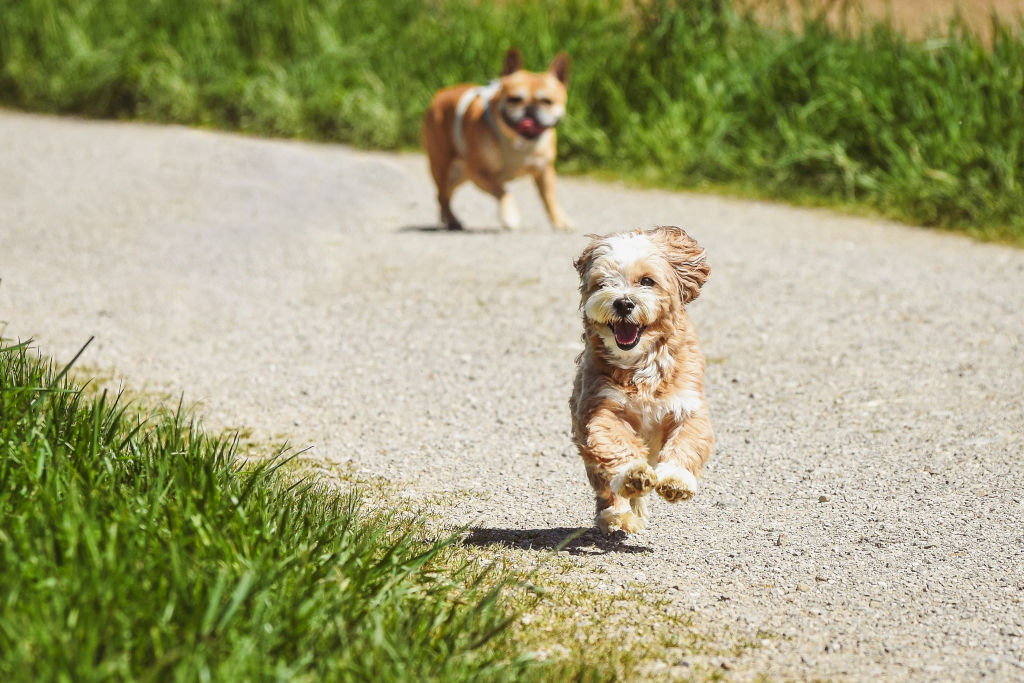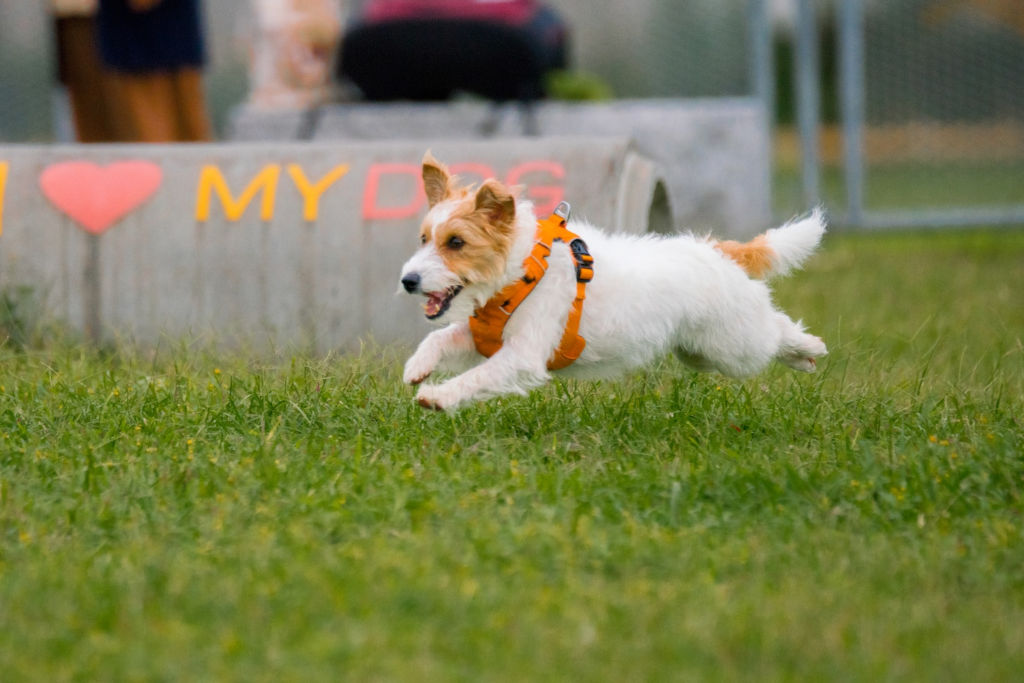Imagine a world where you can trust your dog to come running back to you, no matter the distractions or environment.
That’s precisely what we’ll help you achieve in this step-by-step guide to teaching your dog to come when called using positive reinforcement.
Get ready to explore practical tips, expert insights, and proven techniques that will strengthen your bond with your canine companion and ensure their safety. Let’s transform your dog’s recall training journey into a fun and effective experience!

Why a Reliable Recall is Important
A reliable recall is a key skill for your dog, providing numerous benefits such as:
- Safety. A strong recall ensures your dog’s safety in potentially dangerous situations, allowing you to quickly bring them back to your side.
- Bonding. Training your dog to come when called helps strengthen your bond, trust, and communication.
- Freedom. A dependable recall allows your dog to enjoy off-leash exploration in appropriate environments, while you can have peace of mind.
- Stress Reduction. A reliable recall reduces stress for both you and your dog during walks and outdoor activities.
- Courtesy to Others. A dog that comes when called is less likely to cause problems with other dogs or people, promoting responsible dog ownership.
In a nutshell, investing time in recall training creates a safer, more enjoyable experience for both you and your dog, fostering a strong bond and encouraging responsible behavior.
Building a Positive Connection for Recall Training
When it comes to effective recall training, building a strong bond with your dog is essential.
To create a positive training environment, use rewards like treats, praise, or play to motivate your buddy and make the experience enjoyable for both of you.
Begin in quiet, low-distraction areas, and as your dog’s recall improves, gradually introduce more distractions and challenges.
Remember, patience and consistency are the keys to successful recall training, so take your time and enjoy the journey with your canine companion.
Teaching the “Come” Command
Training your dog to respond to the “come” command is crucial for their safety and your peace of mind. Follow these four steps to teach your dog a reliable recall.
Step 1: Start with a Long Line
Begin training in a controlled environment, such as a fenced yard or a park with few distractions. Attach a long line (20-30 feet) to your dog’s collar or harness.
This allows you to maintain control while giving your dog some freedom to explore. Use high-value treats, praise, or toys to entice your dog to come back to you, and reward them generously when they do, establishing a strong positive association with the command.
Step 2: Add the Verbal Cue
Once your dog consistently comes to you on the long line, introduce the verbal cue “come.” Start by calling your dog’s name, followed by the command “come.”
Practice this with the long line still attached, gradually increasing the distance between you and your dog. Be sure to reward them immediately upon their return each time they respond correctly, so they understand which action is being rewarded.
Step 3: Gradually Remove the Long Line
As your dog becomes more reliable with the verbal cue, you can begin to phase out the long line. Start by shortening the line, then eventually remove it altogether.
Always ensure your dog is in a secure area during this process, and continue to reinforce the command with rewards.
Remember to maintain a high level of praise and reinforcement even after removing the long line to ensure continued success.
Step 4: Practice in Real-World Scenarios
Once your dog reliably responds to the “come” command without the long line, it’s time to practice in real-world situations.
Start by exposing your dog to areas with minimal distractions before gradually introducing more challenging environments. Always use rewards to reinforce their recall.
Tip:

Read more: How to Choose the Right Training Toy for Your Dog
Incorporating Recall into Daily Life
Making recall training a natural part of your dog’s daily routine is an excellent way to reinforce their response to the “come” command and ensure their continued success. Here are some tips to seamlessly integrate recall practice into your everyday activities:
- Make it a game and practice during playtime: Turn recall training into a fun and engaging activity by playing “hide and seek,” having family members call your dog from different locations, or incorporating recall during regular play sessions.
- Use real-life rewards. While treats are great motivators, real-life rewards can also be used to reinforce your dog’s recall. For example, if your dog loves going for a walk, ask them to “come” before you put on their leash. By doing this, you’re reinforcing the command while also rewarding them with something they enjoy.
- Reinforce recall throughout the day. Look for opportunities to practice recall during your daily routine, such as before mealtime, when entering or exiting the house, or during outdoor activities. The more you practice, the stronger your dog’s recall will become.
By making recall training a regular part of your dog’s daily life, you’ll help them develop a reliable and consistent response to the “come” command, ensuring their safety and your peace of mind. Remember to be patient, consistent, and always reward your dog for their efforts.
Common Challenges and Solutions
Training your dog to come when called is an essential skill, but it’s not without its challenges. Here are some common issues you may face during recall training with solutions to overcome them:
Remember, patience and consistency are key to success, so stay persistent and celebrate your dog’s progress along the way.
Wrapping Up: Further Resources
We hope this guide has provided you with valuable insights on how to effectively teach your dog the “come” command. With patience, consistency, and a positive training environment, you’ll soon have a reliable recall that enhances your dog’s safety and your peace of mind.
To further improve your dog training skills and expand your knowledge, be sure to check out our other blog posts on topics like teaching your dog to sit, lie down, stay, drop it, and more.
By following these tips and techniques, you’ll build a stronger bond with your dog and enjoy a harmonious relationship with your furry companion.
FAQs
Can I use a retractable leash for recall training?
It’s better to use a long line instead of a retractable leash for recall training, as it provides more consistent control and a clearer communication of your intentions.
How long does it usually take to train a reliable recall?
The time it takes to train a reliable recall varies, depending on factors like your dog’s age, breed, and temperament, but with consistent training, most dogs make significant progress in a few weeks.
Can I train an older dog to come when called?
Yes, older dogs can be trained to come when called, though it may take more patience and consistency to overcome established habits or previous training experiences.
Can I use an e-collar for recall training?
While some trainers use e-collars for recall training, it’s generally recommended to focus on positive reinforcement methods, as they create a more enjoyable learning experience and foster a stronger bond between you and your dog.
Alex, a passionate animal lover, has experience in training and understanding animal behavior. As a proud pet parent to two dogs and three cats, he founded AnimalReport.net to share insights from animal experts and expand his knowledge of the animal kingdom.




